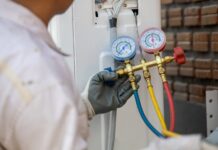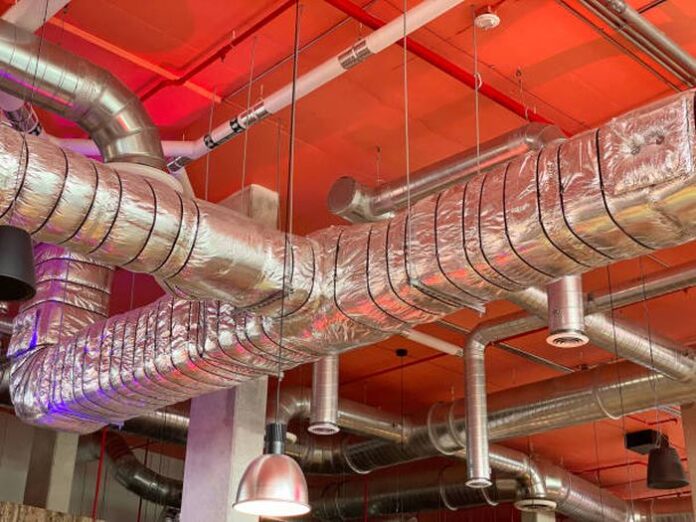
Homeowners often fail to insulate their ductwork to the appropriate levels. Many people may even consider it needless since their uninsulated system performs just as they would expect it to. But what if we told you that a large portion of the HVAC system’s efforts are considered unusable without insulation?
It’s also worth noting that it has the added benefit of extending the life of ductwork and other system components. Well, there is a lot that you need to be aware of whenever talking about the insulation of your duct. Thus, today we are here with some very important information that can help you gain an in-depth understanding of the entire process. We spoke to Mike Thomas of national suppliers PipeLagging.com about the benefits of insulation.
Whether or not ductwork should be insulated?
We refer to the system of pipes and ducts that circulates cooled or heated air throughout the home as ‘ductwork.’
Unfortunately, most ducts are built of thin material, which means that the air transported through the system may easily be lost. The option to leave the ductwork uninsulated in your house is always available to you, of course. However, there are some advantages to adding insulation to your system that you should be aware of:
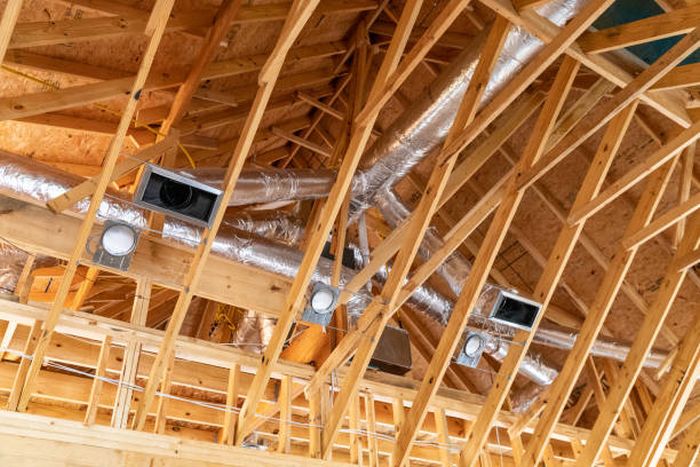
-
Lowers Electricity Bills
As air moves through the system, insulation helps maintain the proper temperature of the air being circulated through it. Furthermore, it helps to avoid leakage, which, in turn, helps to reduce energy loss. You might lose as much as 30% of the energy required to heat or cool your home if you don’t have enough insulation in place.
-
Avoid Condensation
When cold air flows through a particularly heated region of your home, it is possible that condensation may form in the ducting. Consequently, moisture will accumulate, which may lead to the formation of mildew and mold, among other issues. Condensation may develop in a system if the insulation is of poor quality.
Briefly stated, ductwork insulation will assist you in keeping your house comfortable and at an appropriate temperature.
What is the best way to choose the right kind of duct insulation?
Generally speaking, two kinds of duct insulation are available: cross-linked polyethylene and fiberglass. For the most part, fiberglass is the material of choice since it is less expensive than other materials. Plastics such as polyethylene (PE) are more costly, but they are also safer and more visually pleasing than other materials.
When it comes to insulating ducts placed in the attic, above the ceiling, or within the wall, fiberglass is the most effective material. In contrast, if your ducts are located under the ceiling, where they are visible to others, you may want to consider utilizing PE insulation.
Below are the four main types of insulations that are used for the duct area:
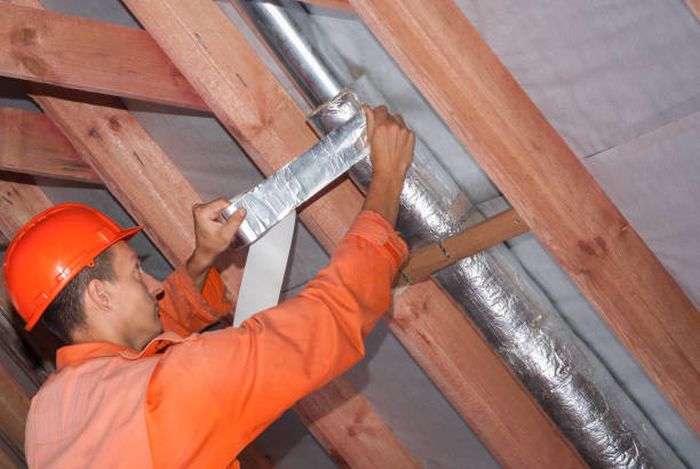
-
Fiberglass Insulation with Perforated Aluminum Foil
Fiberglass is also used to insulate the inside of air conditioning ducts, which helps to reduce noise. Internal insulation for fan coil unit (FCU) ducts is typically made of fiberglass reinforced with perforated aluminum foil. Air handling unit (AHU) ducts have a high wind speed, which may damage the fiberglass and aluminum foil that is used to construct them.
Perforated foils, rather than solid foils, must be utilized for sound insulation purposes because the holes in the material are required to absorb sound properly. Although it is critical to avoid creating an excessively large hole, this is necessary to avoid the fiberglass breaking off and posing a health risk.
-
Rockwool Insulation with Perforated Metal Sheet
Known sometimes as Rockwool or stone wool, this is a sound-insulating material often used to absorb noise on the inside surface of big air conditioning ducts. Internal insulations of AHUs and FCUs, on average, extend around 20 ft (6 m) and 4 ft (1.2 m) from the supply air outlet of the unit, respectively.
In certain cases, fiberglass that meets the same specifications as Rockwool may be used in place of the latter. On the other hand, Rockwool is recommended because it does not rip readily when subjected to the high wind speeds found within AHU ducts.
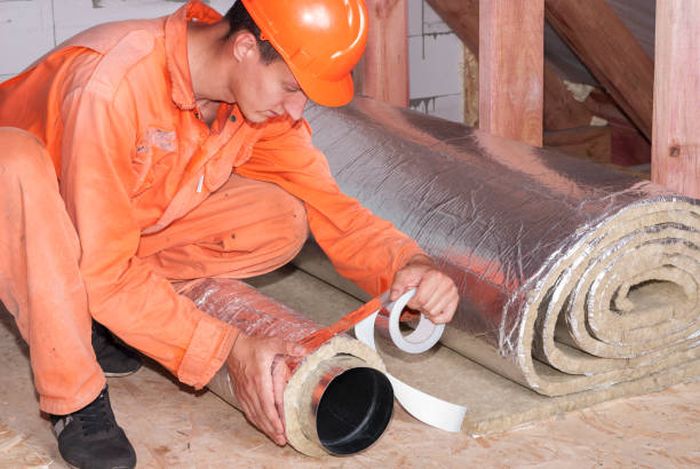
-
Fiberglass Insulation with Aluminum Foil
In the case of HVAC ducts, fiberglass is the most often used insulation material. Flexible ducts are constantly insulated with fiberglass material to keep them from freezing.
To keep the fiberglass insulation together, it is coated with glossy aluminum foil coating on the insulation’s outside surface.
-
Cross-Linked Polyethylene Insulation Foam
Exhaust ventilation ducts and air conditioning ducts are often insulated with polyethylene (PE), a thermoplastic polymer. When the ductwork is exposed, it is preferable to utilize polyethylene insulation.
Since polyurethane insulation is more costly than fiberglass insulation, hidden ducts are often not insulated with polyurethane foam. PE insulated ducts are more visually pleasing than fiberglass insulated ducts because they are free of creases. Additionally, compared to fiberglass insulation, PE insulations are safer to deal with.
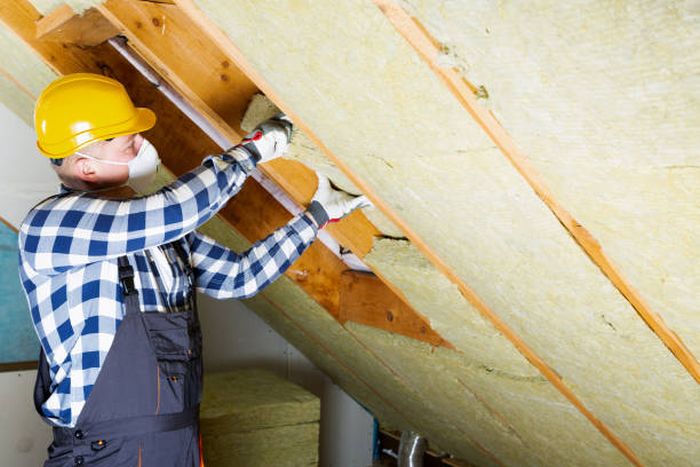
How to Calculate the Thickness of Duct Insulation?
A lot of people have difficulty determining the ideal duct insulation thickness. Condensation is one of the most common reasons for duct insulation, even though certain regulations call for significantly thicker insulation to save energy.
For condensation to be prevented on ducts, the duct’s exterior surface must not dip below or near the dew point temperature. Dew point is influenced by temperature and humidity; hence it is not a fixed value. In other words, it depends on where you live. Because condensation may occur as soon as the air conditioner is turned on, the initial temperature and relative humidity data should be used instead of the intended room conditions value when calculating the dew point.
If you have hidden ducts above or within walls, use the chart below to calculate the duct insulation thickness:
| Temperature Difference | Suggested Thickness of Insulation |
| 30 °F | 1” (25mm) |
| 35 °F | 1” (25mm) |
| 40 °F | 1-1/2” (38mm) |
| 45 °F | 1-1/2” (38mm) |
| 50 °F | 2” (50mm) |
Looking For Duct Insulation Experts?
If you are planning to get done with duct insulation, then ensure to connect to the professionals at Pipe Lagging for help!




